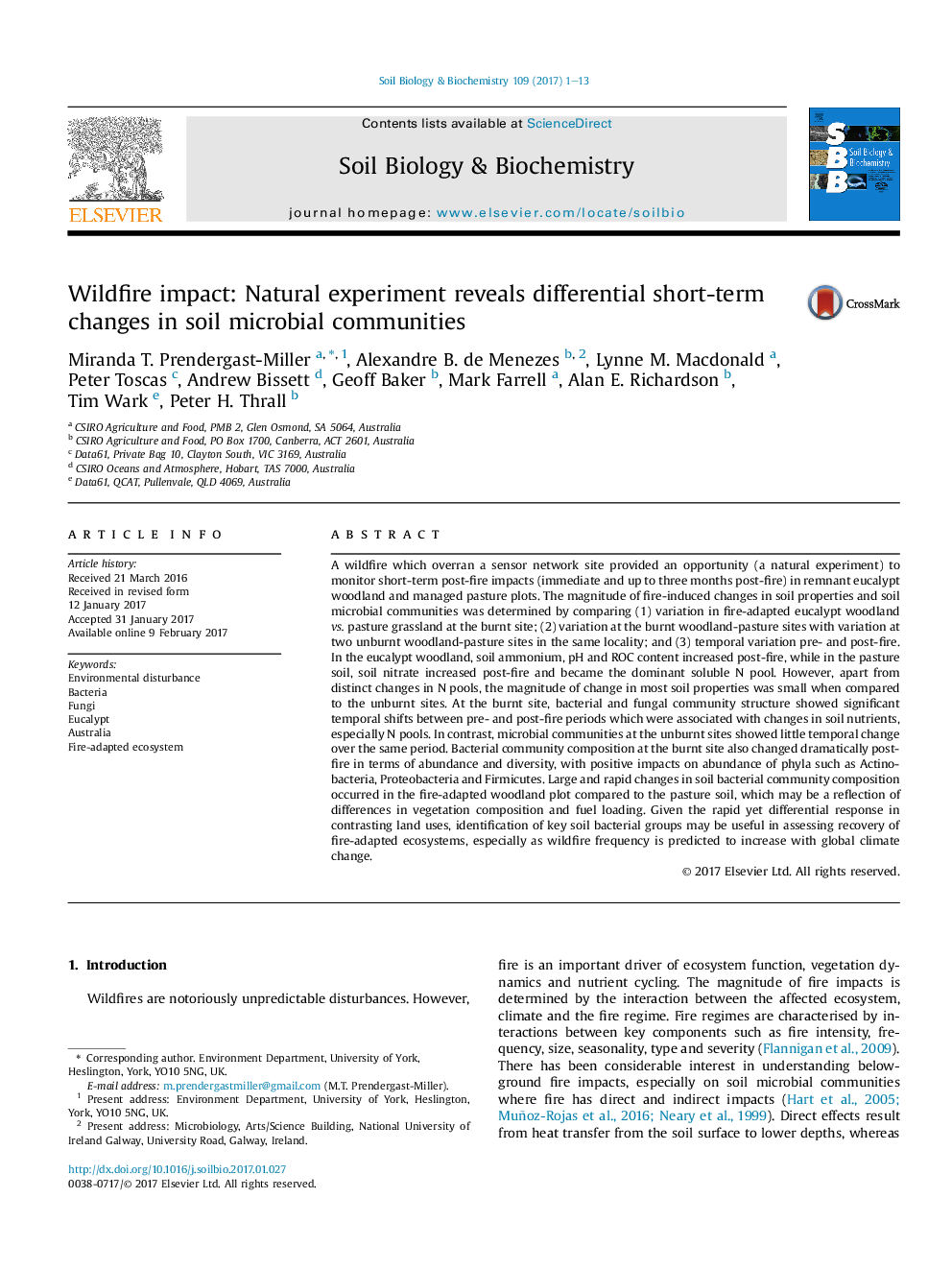| Article ID | Journal | Published Year | Pages | File Type |
|---|---|---|---|---|
| 5516470 | Soil Biology and Biochemistry | 2017 | 13 Pages |
â¢Natural experiment compared burnt vs unburnt sites to determine wildfire impacts.â¢Contrasting effects in native woodland vs managed pasture soils.â¢Soil NH4 increased post-fire in woodland soil whilst NO3 increased in pasture soil.â¢Rapid change with greater diversity in woodland bacterial community composition.
A wildfire which overran a sensor network site provided an opportunity (a natural experiment) to monitor short-term post-fire impacts (immediate and up to three months post-fire) in remnant eucalypt woodland and managed pasture plots. The magnitude of fire-induced changes in soil properties and soil microbial communities was determined by comparing (1) variation in fire-adapted eucalypt woodland vs. pasture grassland at the burnt site; (2) variation at the burnt woodland-pasture sites with variation at two unburnt woodland-pasture sites in the same locality; and (3) temporal variation pre- and post-fire. In the eucalypt woodland, soil ammonium, pH and ROC content increased post-fire, while in the pasture soil, soil nitrate increased post-fire and became the dominant soluble N pool. However, apart from distinct changes in N pools, the magnitude of change in most soil properties was small when compared to the unburnt sites. At the burnt site, bacterial and fungal community structure showed significant temporal shifts between pre- and post-fire periods which were associated with changes in soil nutrients, especially N pools. In contrast, microbial communities at the unburnt sites showed little temporal change over the same period. Bacterial community composition at the burnt site also changed dramatically post-fire in terms of abundance and diversity, with positive impacts on abundance of phyla such as Actinobacteria, Proteobacteria and Firmicutes. Large and rapid changes in soil bacterial community composition occurred in the fire-adapted woodland plot compared to the pasture soil, which may be a reflection of differences in vegetation composition and fuel loading. Given the rapid yet differential response in contrasting land uses, identification of key soil bacterial groups may be useful in assessing recovery of fire-adapted ecosystems, especially as wildfire frequency is predicted to increase with global climate change.
